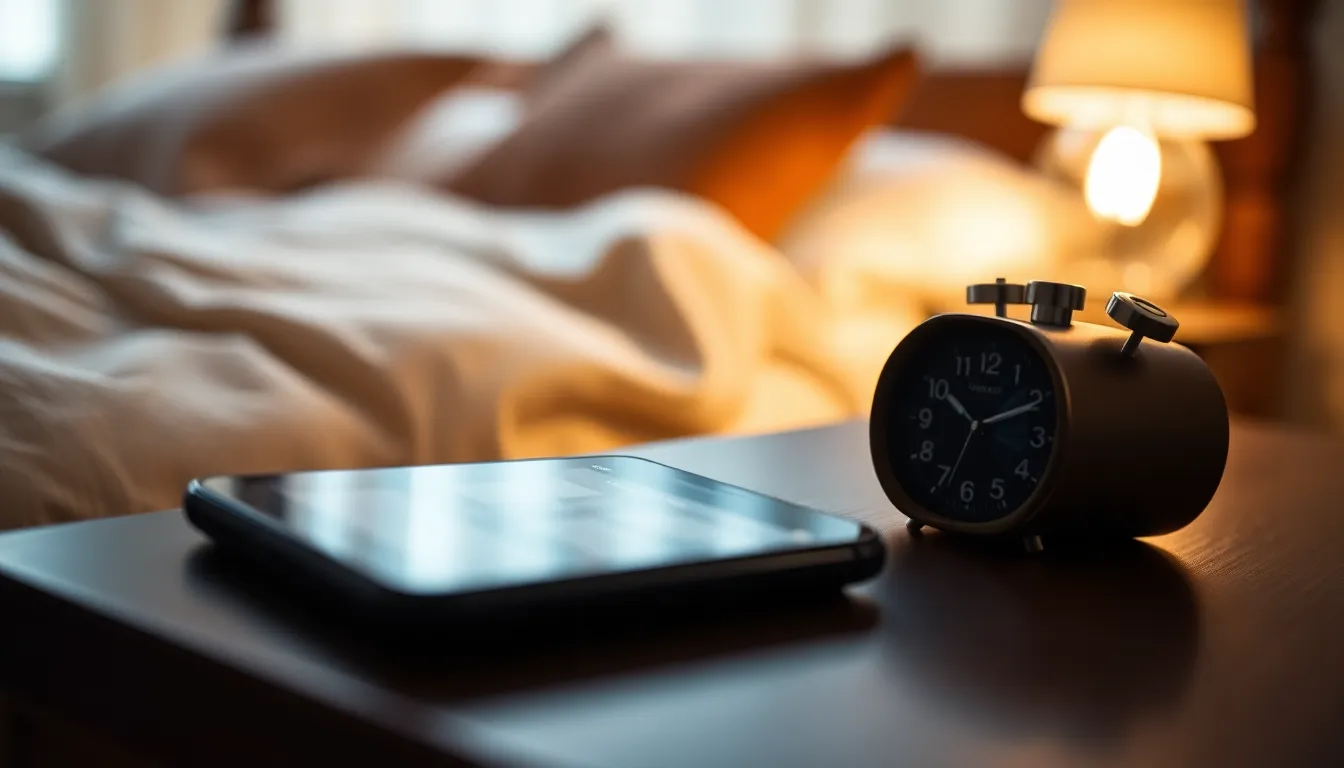Table of Contents
ToggleWaking up to an alarm that sounds more like a gentle whisper than a wake-up call can be downright frustrating. If you’ve ever found yourself snoozing through a symphony of soft beeps, you’re not alone. Many people grapple with the mystery of why their alarms seem to have taken a vow of silence.
Is it a glitch in the matrix or just your phone’s way of playing hard to get? Whatever the reason, it’s time to dive into the world of alarm settings, volume controls, and the occasional tech mishap. Get ready to uncover the secrets behind that low alarm and ensure you rise and shine instead of rolling over for another snooze.
Understanding Alarm Volume
Low alarm volume often frustrates users, impacting their ability to wake up on time. Various factors can contribute to this issue, and recognizing them aids in finding solutions.
Causes of Low Alarm Volume
Alarm settings frequently dictate volume levels. Users sometimes set alarms at a low volume unintentionally during configuration. Volume controls on devices may also affect alarm loudness. Technical issues, like outdated software or hardware malfunctions, can lead to inadequate sound output. Additionally, placement of the alarm device matters; positioning it near soft surfaces can muffle sound.
Importance of Alarm Volume
Alarm volume serves a crucial role in waking individuals from sleep. A loud alarm effectively interrupts sleep cycles, ensuring timely wake-ups. Insufficient volume can cause users to miss alarms, leading to oversleeping and affecting daily routines. Consistency in alarm volume contributes to establishing healthy sleep patterns. Clear and audible alarms promote a more productive start to the day, enhancing overall well-being.
Common Issues with Alarms

Low alarm volume often stems from multiple factors. Understanding these issues can help resolve the problem effectively.
Software Glitches
Software glitches frequently impact alarm performance. Device settings can reset after software updates, leading to low alarm sounds. Operating system bugs or errors in the alarm application might decrease volume unexpectedly. Additionally, users may overlook app permissions that affect alarm functionality. Ensuring that the alarm app is up to date minimizes potential issues. Restarting the device can also clear temporary glitches, allowing alarms to function properly once again.
Hardware Problems
Hardware problems can significantly affect alarm volume. Older devices may have diminished speaker quality, resulting in lower sound output. Dust buildup can muffle speakers, impacting the clarity of the alarm tone. Additionally, if the alarm is placed on soft surfaces, sound may be absorbed rather than projected. Inspecting the device for physical damage, like cracks or water exposure, can reveal underlying issues. Using the device in a case not designed for sound output can also hinder alarm effectiveness.
Troubleshooting Steps
Start by exploring the following troubleshooting steps to resolve low alarm volume issues effectively.
Check Volume Settings
Adjusting the volume settings often resolves alarm sound problems. Many users overlook their device’s main volume control, which directly influences alarm sounds. Check both the general volume and media volume settings in your device’s sound options. Sometimes, alarm-specific settings exist within the app, so don’t skip this step. If using a smartphone, ensure that Do Not Disturb mode isn’t restricting alarm sounds. Increasing the volume to a suitable level can make a significant difference in waking up on time.
Resetting the Device
Restarting the device can fix glitches affecting alarm performance. When technical issues arise, a simple reset often clears temporary software faults. Performing this action refreshes the system, restoring functionality. Follow the manufacturer’s guidelines to ensure a proper restart. If using an app, consider deleting and reinstalling it if issues persist after resetting. Frequent resets may not be convenient, but they can help maintain optimal alarms and overall device performance.
Tips for Maximizing Alarm Volume
Maximizing alarm volume can significantly enhance wake-up effectiveness. Several steps can help ensure alarms reach their full potential.
Adjusting Sound Settings
First, check both general and media volume settings. Alarm applications often have separate volume controls, so adjusting these is essential. If the device features a Do Not Disturb mode, verify that alarms can still break through this setting. Restarting the device may also resolve any glitches impacting sound. Hardware settings, like ensuring no soft surfaces muffle the device, can also improve acoustics. For those using smartphones, accessing sound settings directly through the device’s menu often yields the best results.
Choosing the Right Alarm Tone
Selecting an appropriate alarm tone plays a crucial role in wake-up success. Opt for louder tones or those with gradually increasing volumes, which can gently nudge individuals awake. Popular alarm sounds often include nature themes or upbeat melodies that disrupt sleep cycles effectively. Experimenting with various tones may yield a more effective choice. Additionally, specific alarms designed for heavy sleepers might offer features such as vibration combined with sound to ensure effectiveness. Prioritizing the right alarm tone can make all the difference in consistent wake-up success.
Addressing the issue of low alarm volume can make a significant difference in waking up on time. By understanding the various factors that contribute to quiet alarms, individuals can take proactive steps to enhance their morning routines. It’s essential to regularly check settings and ensure devices are functioning properly.
Choosing the right alarm tone and ensuring optimal placement can also improve effectiveness. With these adjustments, anyone can transform their wake-up experience from frustrating to refreshing. Prioritizing alarm performance not only supports punctuality but also contributes to a healthier lifestyle.




